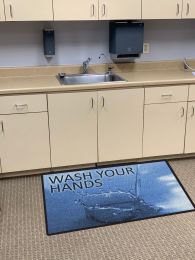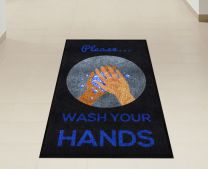Where Can You Find Super Berber Mats?
Most people have probably never heard of a super Berber mat, but almost everyone has seen and used one. Lots of companies use this type of mats in their operation, and the average person has no idea what it is.
From its humble origins in the desert of Africa to the heavy-duty mats made today, they have both changed and stayed the same. So, let’s discuss a bit about what they are, why they’re called super Berber mats, and where you can find them throughout your day.

What is a Super Berber Mat?
Super Berber mats are carpet-like mats made by punching polypropylene or other synthetic fibers into a backing material. So how is this different from a regular mat?
The main difference between this and your average carpet, besides the heavy-duty material and normally textured rubber backing, is the fact that the loops created by stitching the fibers into the backer are left in uncut loops. Thereby giving the mat a more sturdy pile than cut fiber surfaces.
They are designed to withstand heavy foot-traffic areas while maintaining their colors and resisting wear damage. This makes them cost-effective, as they should last for quite a long while, and they can keep slick floors from becoming a very expensive liability. Everyone in business knows cost efficiency and reduction of potential lawsuits are always primary concerns with any expense.
Why are they called super Berber mats?
The term “Berber” is a word originally used to describe various groups of people who live in Northern Africa, typically west of Tripoli. The weave pattern for super Berber mats is derived from the special ways in which the Berber people traditionally made their mats. Their use of different knotting and texture patterns in both traditional and modern mats has been used and improved in more modern manufacturing.
“Super”, in this case, is used to describe the way in which those techniques have been combined with technology to make even better and stronger mats in the style.
Where are they found?
Due to their high durability and resilience to wear and tear, this type of mat is used in high traffic areas. They are used in doorways due to their ability to cling onto water and moisture and keep it from being tracked around the store. This helps cut down on cleaning expenses and time by not letting nearly as much of the potentially hazardous liquid and debris get by and cause unnecessary issues.
They can also be found in aisles or walkways, as these are also high traffic areas that can potentially become slippery and cause a slip and fall liability issue for the company. Often, they will be printed with a company logo or slogan to further brand recognition as a form of marketing in a cost-effective and efficient manner.
So, basically, just look down?
In a word, yes.
The next time you visit the local supermarket, pharmacy, or even government building, pay attention to the entrance mat you walk across. Chances are, it could be a super Berber mat you will be treading on. And you probably won’t even be able to guess its age, given their sturdiness.
Their versatility, usefulness, and durability make for excellent mats for entrances and hard surface walkways. Not to mention the marketing possibilities when it comes to the nearly endless customization options offered by manufacturers of this type of mat.
Taking traditional mat-making methods and combining them with the ever-advancing technology of the floor covering industry produces some amazing mats that will surely serve their purpose for a long while to come.

